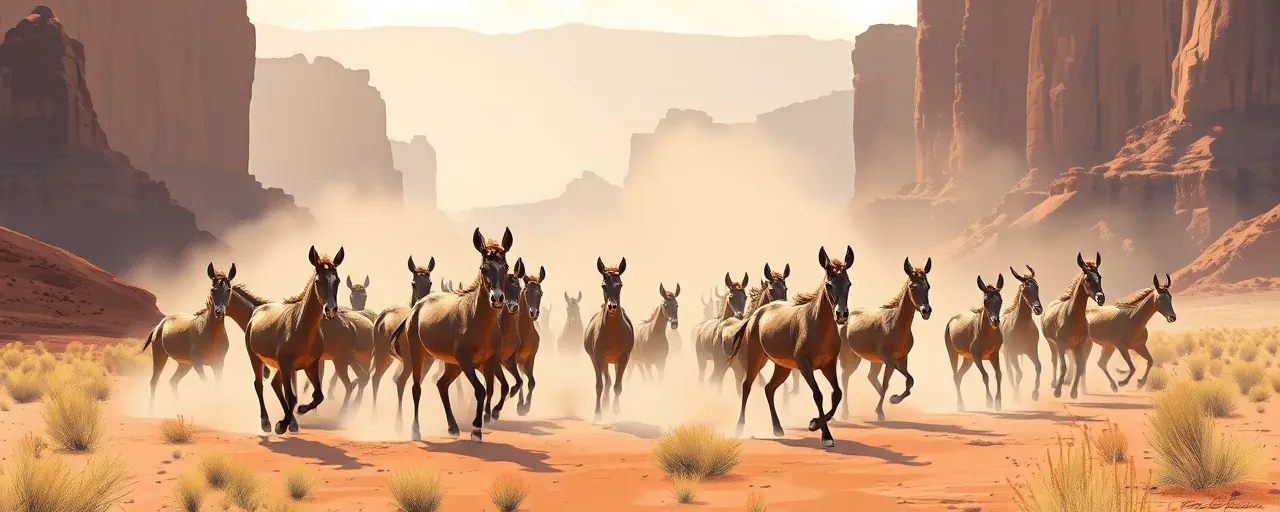A Sudden Loss in the Desert
In late February, a routine gather of wild burros from Utah’s Canyonlands Herd Management Area took an unexpected turn. The Bureau of Land Management (BLM) rounded up the animals, a common practice to keep populations in check, and brought them to the Axtell Off-Range Corral. Within weeks, 25 of these sturdy desert dwellers were dead, struck by a fast-moving illness that left caregivers scrambling. It’s a stark reminder of how fragile life can be, even for creatures built to endure harsh landscapes.
The deaths, first reported on March 11, 2025, sparked an immediate investigation. Veterinarians pinpointed the cause: bronchopneumonia, worsened by a bacterial infection known as Streptococcus equi ssp. Zooepidemicus, with a gammaherpes virus as the underlying trigger. For the BLM, tasked with managing these animals under federal law, the outbreak has reignited debates about how best to protect wild burros while balancing ecological and practical realities.
Unpacking the Science Behind the Sickness
The gammaherpes virus identified in the burros isn’t the usual suspect in equine diseases. Unlike the more familiar equine herpesviruses that hit horses with respiratory or neurological symptoms, this strain is less common and poorly understood. Experts say it’s naturally present in donkeys and horses, but stress, like that from a gather, can tip it into deadly territory. Add a secondary bacterial infection, and the result is a one-two punch that overwhelmed the Axtell group. By March 21, the deaths stopped, but not before a quarter of the gathered herd was lost.
Treatment kicked into high gear. Surviving burros got antibiotics and anti-inflammatory drugs to fight fever and ease breathing. Those exposed but not yet sick received a long-acting antibiotic as a shield. The BLM isolated the group, ensuring no other animals at the facility caught the bug. It’s a controlled response, but it echoes a 2016 outbreak in the nearby Sinbad Herd, where similar viruses took a toll. History, it seems, has a way of repeating itself in these rugged lands.
The Bigger Picture of Burro Management
The BLM oversees wild horses and burros under a 1971 law aimed at keeping them free-roaming yet sustainable. With populations often tripling the land’s capacity, the agency leans on gathers, fertility control, and adoptions. In 2025 alone, plans call for removing 10,000 animals and placing another 10,000 into private hands. The Axtell incident fits into this broader effort, but it’s not without friction. Some argue the stress of roundups, often done by helicopter, primes animals for disease. Others say it’s the only way to prevent starvation and habitat collapse.
Adoption programs offer a lifeline, though they’ve hit snags. A $1,000 incentive scheme, launched in 2019, boosted adoptions to nearly 30,000 before a 2025 court ruling paused it over fears of animals ending up in slaughterhouses. Meanwhile, holding facilities, costing taxpayers over $100 million yearly, sometimes become disease hotspots. The Axtell outbreak isn’t isolated; past incidents, like a 2022 strangles flare-up in Wyoming, show how captivity can amplify health risks. It’s a messy balance between nature and necessity.
Voices From the Field and Beyond
Veterinarians and BLM staff emphasize they’re doing all they can. The agency collaborates with experts nationwide, tweaking protocols to keep animals healthy. Yet, not everyone’s convinced. Advocates for wild burros push for more fertility control, like the PZP vaccine, to cut gathers and their risks. They point to California, where equine influenza killed dozens of burros in 2022 and 2023, as proof of vulnerability. On the flip side, ranchers and land managers argue overpopulation threatens grazing for livestock and wildlife, making removals non-negotiable.
The public’s role looms large too. Adopting a burro sounds romantic, but it’s a tough sell when thousands still languish in corrals. Training initiatives, like Mustang Makeovers, try to bridge the gap, turning wild animals into companions. The Axtell survivors, once recovered, will join that pipeline. It’s a system under strain, where every death prompts questions about what’s working and what’s not.
Where the Trail Leads
For now, the Axtell burros are on the mend, watched closely under quarantine. The BLM promises updates and insists no wider threat exists; the virus doesn’t jump to humans or other species. Once cleared, these animals will be up for adoption, a chance to trade corrals for open pastures. It’s a small win in a saga that’s far from over, with the agency juggling science, logistics, and public expectations.
The outbreak lays bare a truth: managing wild burros is a tightrope walk. Disease can strike fast, and solutions aren’t simple. As populations grow and budgets stretch, the path forward demands fresh ideas, whether through better vaccines, smarter gathers, or broader adoption drives. The burros of Canyonlands, caught in this latest chapter, remind us that even the toughest survivors need a hand to keep standing.
